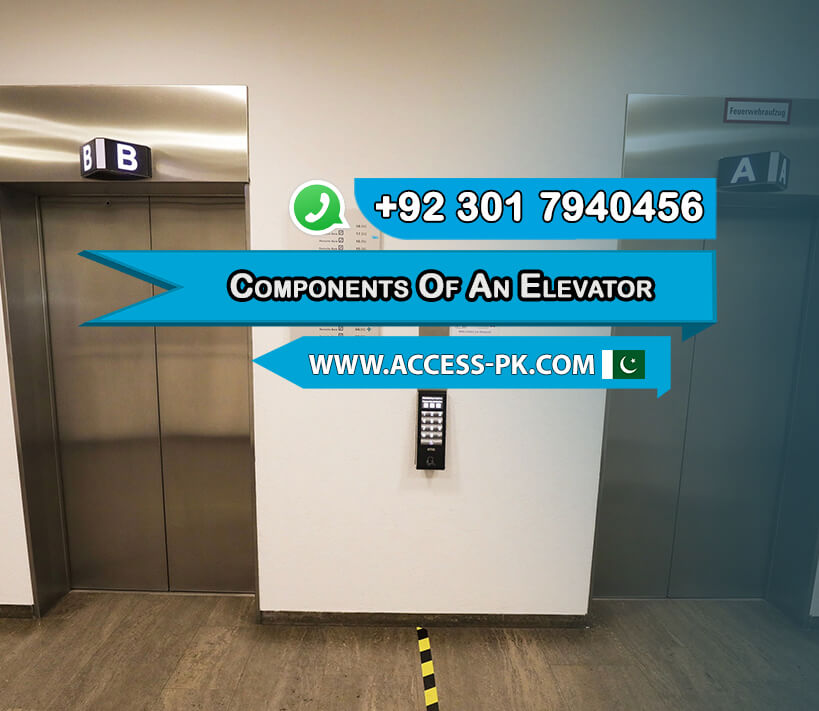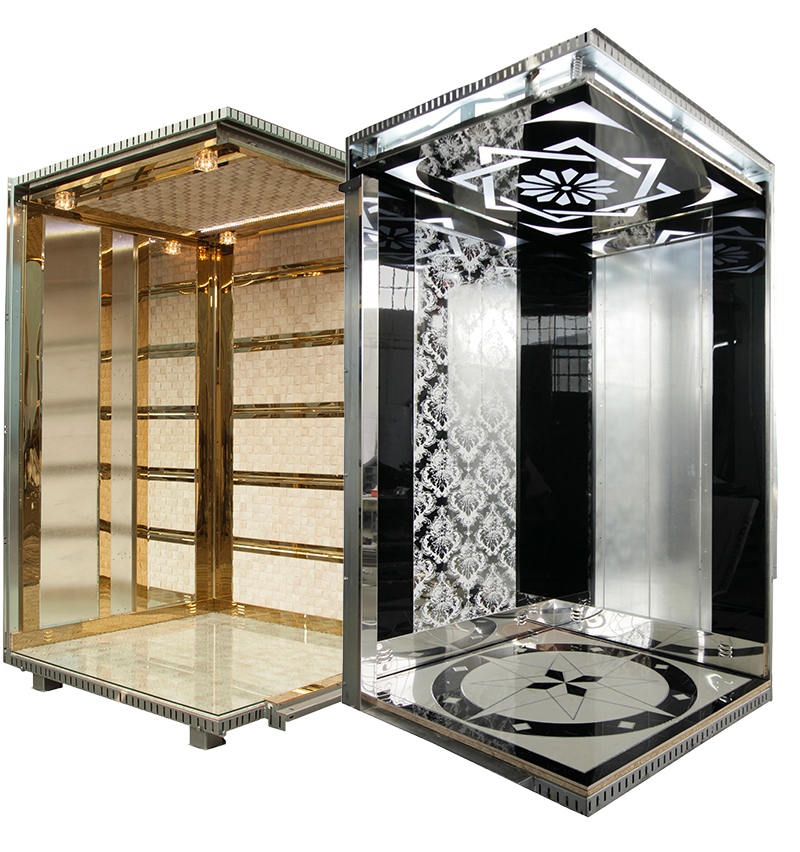Elevators are sophisticated machines designed to transport people and goods efficiently between floors. At the heart of how an elevator works is its motor, which powers the system. Access Technologies, owned by Imran Rafi, excels in providing innovative elevator solutions that ensure smooth and reliable operation. The motor drives the elevator’s pulley system, which in turn moves the elevator car up and down the shaft. Understanding the components and their functions is crucial to appreciating how an elevator operates.
The guide rails within the elevator shaft play a pivotal role in ensuring smooth and stable movement. These rails support the elevator car and guide it vertically, preventing any wobbling or swaying. Additionally, the hoistway, or the vertical shaft where the elevator travels, must be precisely constructed to accommodate the car and counterweights. As the elevator car ascends or descends, the counterweights balance the load, which significantly reduces the motor’s workload.
Safety mechanisms are integral to the elevator’s design. These include the elevator doors, which prevent accidents by ensuring that the car is properly aligned with each floor before opening. Furthermore, modern elevators are equipped with various sensors and braking systems that enhance safety. By combining these components, the elevator work becomes a harmonious blend of engineering precision and safety, ensuring that the elevator operates smoothly and reliably.
Get Free QuotesThe Basic Components of an Elevator System

Understanding the basic components of an elevator system is essential to grasping how an elevator work. The elevator car is the primary part of the system where passengers or cargo are carried. It moves up and down the hoistway, which is the vertical shaft within which the elevator operates. The elevator car is connected to a system of cables and pulleys that help it move smoothly. These components must be precisely engineered to ensure the elevator’s efficiency and safety.
Elevator Car
The elevator car serves as the central unit of the elevator system, where passengers or goods are transported. It is designed to provide a comfortable and secure environment. The interior of the elevator car is equipped with controls for passengers to select their desired floors. Additionally, the car’s construction includes safety features such as emergency communication systems and anti-slip flooring. Proper maintenance of the elevator car is crucial for its reliable operation, as any malfunction can affect the overall elevator work and user safety.
Guide Rails
Guide rails are essential components that ensure the smooth and stable movement of the elevator car. These rails are installed along the sides of the hoistway and serve as a track for the elevator car to travel along. They prevent any swaying or misalignment, which could otherwise lead to operational issues or safety hazards. The precision and quality of the guide rails directly impact the performance and safety of the elevator. Regular inspection and maintenance of the guide rails are vital to ensure they function correctly and contribute to the efficient elevator work.
Doors & Safety
Elevator doors play a critical role in passenger safety by ensuring that the elevator car is properly aligned with each floor before opening. They are designed to open and close automatically, based on the car’s position. Safety mechanisms such as sensors and interlocks prevent the doors from opening if the car is not correctly aligned, thereby reducing the risk of accidents. Additionally, modern elevators include advanced safety features like emergency stop buttons and communication systems to address any issues promptly. Proper functioning of the doors and safety features is crucial for reliable elevator work and overall passenger safety.
Get Free QuotesUnderstanding the Role of the Elevator Motor

The elevator motor is a critical component in how an elevator work, as it powers the entire lifting mechanism. This motor converts electrical energy into mechanical energy, which drives the pulley system connected to the elevator car. By controlling the movement of these pulleys, the motor enables precise and smooth vertical travel. Modern elevator motors are designed to be highly efficient and reliable, minimizing energy consumption while maximizing performance. Regular maintenance of the motor ensures that it continues to operate smoothly, preventing potential issues that could disrupt elevator work.
| Elevator Type | Cost |
|---|---|
| Stair lifts | 810000 to 1770000/Pkr |
| Home Lifts | 1200000 to 2000000/Pkr |
| DIY Food Elevator | 2230000 to 3350000/Pkr |
| Two-Story Home Lift | 7020000 to 8420000/Pkr |
| Hospital Bed Elevators | 4150000 to 8300000/Pkr |
| Panoramic Elevator | 3180000 to 3870000/Pkr |
Additionally, the elevator motor is integral to the balance and stability of the elevator system. It works in tandem with counterweights, which help to offset the car’s weight and reduce the motor’s workload. This balance is crucial for smooth and consistent movement. Advanced motor systems are often equipped with features such as variable frequency drives (VFDs) that allow for smooth acceleration and deceleration. This technology enhances the overall user experience and ensures that the elevator operates efficiently and safely. Proper care and timely servicing of the elevator motor are essential for maintaining its effectiveness and longevity.
Get Free QuotesHow the Elevator Control System Ensures Safe Operation

The elevator control system is vital to ensuring the safety and efficiency of how an elevator work. It manages all operational aspects of the elevator, including its movement, speed, and stopping at floors. The control system processes inputs from various sensors and user commands, adjusting the elevator’s performance accordingly. This system is designed with numerous safety features to prevent malfunctions and ensure smooth operation. For instance, the control system monitors the elevator’s speed and position, automatically adjusting if any anomalies are detected. This proactive approach helps prevent accidents and maintains the elevator’s reliability.
Moreover, the elevator control system plays a significant role in managing emergency situations. It includes features such as emergency stop buttons and alarms that activate in the event of a malfunction or emergency. The system also controls the elevator’s response to power failures, ensuring that it remains operational or safely parks itself until power is restored. By integrating these safety mechanisms, the control system enhances overall elevator work, providing a safe and secure environment for passengers. Regular testing and updates of the control system are crucial for maintaining its effectiveness and reliability in various operating conditions.
Get Free QuotesThe Importance of Counterweights in Elevator Mechanics

Counterweights play a crucial role in how an elevator work, significantly impacting the efficiency, safety, and overall performance of the elevator system. These weights balance the elevator car, reducing strain on the motor and enabling smoother, more efficient movement. By offsetting the car’s weight and its load, counterweights ensure minimal energy consumption, enhancing the elevator’s efficiency. This balance helps manage the car’s movement up and down the hoistway with ease, reducing the motor’s workload and extending its lifespan.
Efficiency Benefits
Counterweights are essential for enhancing the efficiency of elevator work. They effectively balance the weight of the elevator car, which reduces the amount of energy required by the motor to move the car up and down. This balance minimizes the motor’s workload, leading to lower energy consumption and reduced operational costs. By distributing the load evenly, counterweights also help in maintaining a consistent speed during the elevator’s travel, contributing to a smoother ride for passengers. Overall, the use of counterweights leads to more efficient elevator operation and a longer lifespan for the motor and other components.
Balancing the Load
Balancing the load is a fundamental aspect of how counterweights improve elevator work. Counterweights offset the weight of the elevator car and its passengers or cargo, which stabilizes the system and reduces the effort needed from the motor. This balance prevents the elevator car from becoming too heavy on one side, ensuring smooth and stable movement within the hoistway. Proper balancing also helps in avoiding excessive wear and tear on the elevator components, leading to more reliable and consistent performance. Effective load balancing is crucial for maintaining the elevator’s efficiency and longevity.
Safety Aspects
The safety aspects of counterweights are vital for ensuring safe elevator operation. By balancing the load, counterweights reduce strain on the motor and mechanical parts, lowering the risk of failures and accidents. They maintain the elevator car’s stability during travel, preventing sudden jolts or movements that could be hazardous. Additionally, counterweights enhance the elevator’s reliability, ensuring safe and effective performance under different load conditions. Regular maintenance and adjustment of counterweights are essential for upholding safety standards in elevator work.
Get Free Quotes



